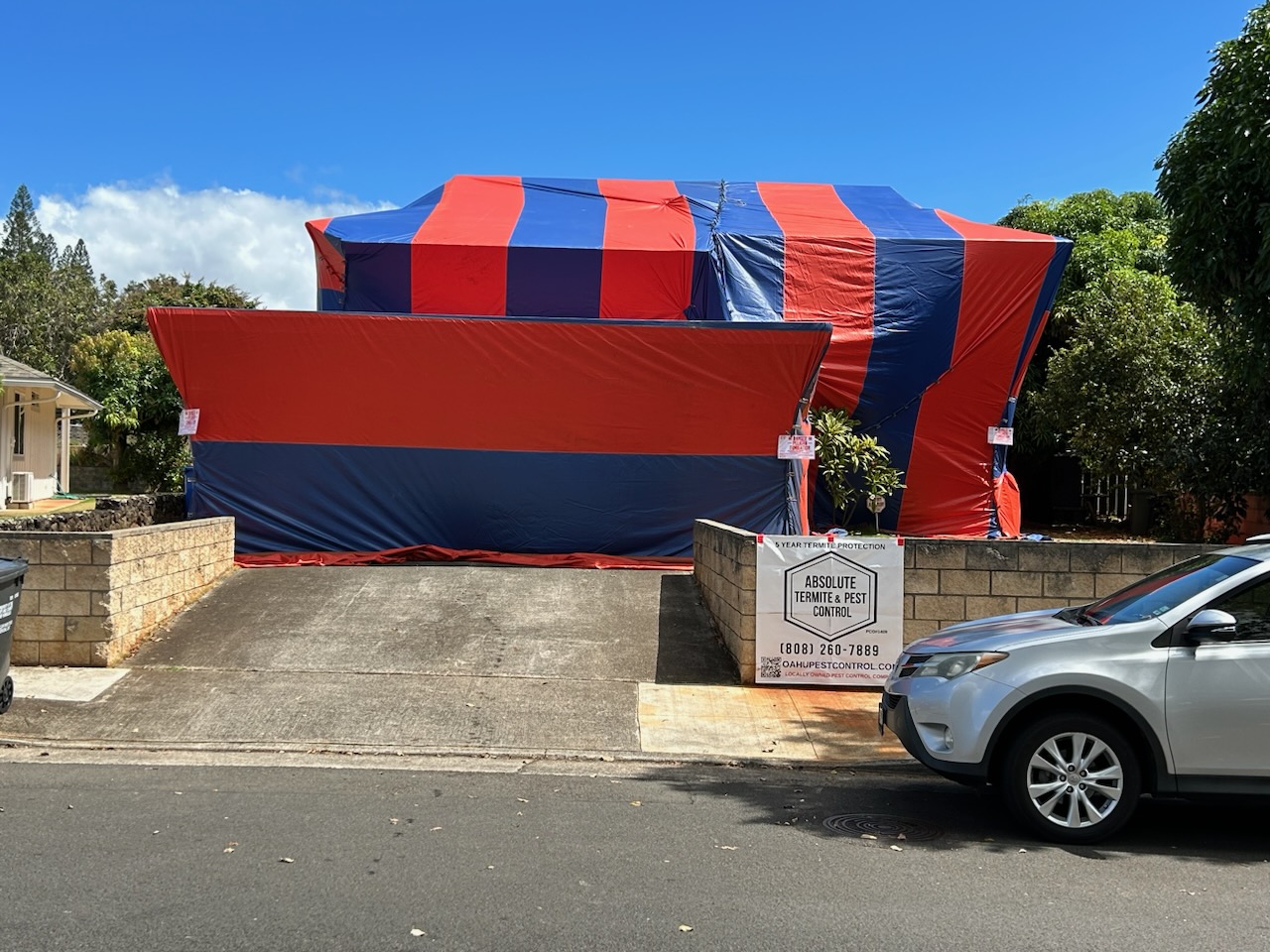Signs You Have a Bed Bug Infestation and How to Identify Them
- Absolute Pest Control Hawaii PCO#1409
- Aug 27
- 4 min read
Bed bugs are small, sneaky pests that can quickly turn your peaceful nights into a frustrating battle. If you think you have a bed bug problem, identifying the signs early is vital. This blog post will help you recognize the common indicators of a bed bug infestation and how to spot them effectively.
Understanding Bed Bugs
Bed bugs are tiny, reddish-brown insects that feed on the blood of humans and animals. They are nocturnal, making them hard to detect during the day, and their size allows them to hide in various locations, such as mattresses, bed frames, and furniture seams.
Recognizing the signs of a bed bug infestation is essential for timely intervention, as a small problem can quickly turn into a significant one.
Common Signs of Bed Bug Infestation
1. Bites on Your Skin
One of the most visible signs of a bed bug infestation is bites on your skin. These bites typically appear in clusters or straight lines and may result in swollen, itchy welts. A study shows that about 70% of people have no reaction to bed bug bites, but for those who do, the bites can be quite uncomfortable.
These bites often occur in exposed skin on your arms, neck, and face. If you wake up with unexplained bites, it’s time to investigate further.
2. Blood Stains on Sheets
Another unmistakable sign of bed bugs is small blood stains on your sheets or pillowcases. These stains happen when bed bugs are crushed after feeding. Some people report finding these stains in the morning, often after they didn’t notice an infestation the night before.
If you see any blood stains, it's a clear indication that bed bugs have made a home in your sleeping area.
3. Dark Spots on Bedding
Bed bugs leave behind small, dark spots on your bedding or mattress that consist of excrement. Often mistaken for mold or dirt, these spots are a strong signal of bed bug activity. A survey conducted in urban areas found that nearly 60% of homes with bed bugs show evidence of these dark stains.
Be sure to check the seams of your mattress, the bed frame, and any surrounding areas for these warning signs.
4. Shed Exoskeletons
As bed bugs grow, they shed their exoskeletons, which can be found in their hiding places. Locating these shed skins is a strong sign that bed bugs are present and reproducing. Inspect common hiding areas, such as mattress seams and behind headboards.
In some cases, you might find multiple exoskeletons, indicating a more significant issue.
5. A Musty Odor
Bed bugs release pheromones that can create a musty smell in places with a more significant infestation. If you notice an unusual, sweet, or moldy scent in your bedroom, it could indicate a bed bug problem. One study showed that about 1 in 4 homes with infestations had a noticeable odor.
Pay close attention to areas where you suspect bed bugs might be hiding.
6. Live Bed Bugs
The most definitive sign of a bed bug infestation is seeing live bugs. Adult bed bugs are about the size of an apple seed, making them visible to the naked eye. They tend to hide in mattress seams, bed frames, and other crevices during the day.
If you spot one, it’s critical to act quickly to prevent a larger infestation.

7. Unusual Behavior of Pets
Pets can also be victims of bed bugs. If your pet is scratching more than usual or seems restless at night, check for bed bugs in your home. Some pet owners have reported that their dogs and cats show signs of discomfort, indicating potential bites from bed bugs.
If your furry friend is acting differently, it may be time to investigate further.
How to Confirm a Bed Bug Infestation
If you suspect a bed bug issue, confirming your fears is essential before taking action. Here are steps to help you identify an infestation:
1. Conduct a Thorough Inspection
Start by closely examining your mattress, bed frame, and nearby areas. Look for live bugs, shed skins, blood stains, and dark spots. Use a flashlight to inspect dark corners and crevices where bed bugs may hide.
Try to make your inspection methodical. Start at one corner and work your way around the bed.
2. Use Bed Bug Monitors
Consider using bed bug monitors or traps to catch any bugs that may be hiding nearby. These devices can help confirm whether you have an infestation. Place them strategically around your bed and check them regularly for any signs of activity.
If you find bugs in the traps, it's likely time to take further action.
3. Seek Professional Help
If you're still uncertain or confirm the presence of bed bugs, consider contacting a pest control professional. They possess the expertise and tools necessary to identify and effectively eliminate bed bugs from your home. Professional extermination typically offers the best results and peace of mind.
Taking Action Against Bed Bugs
Identifying the signs of a bed bug infestation is vital for effective treatment. By recognizing common indicators like bites, blood stains, and dark spots, you can act quickly to protect your home and health.
If you suspect a bed bug problem, inspect thoroughly and don’t hesitate to seek professional assistance. The sooner you tackle the issue, the easier it will be to eliminate these persistent pests. Stay alert and safeguard your sleep from these unwelcome intruders!











Comments